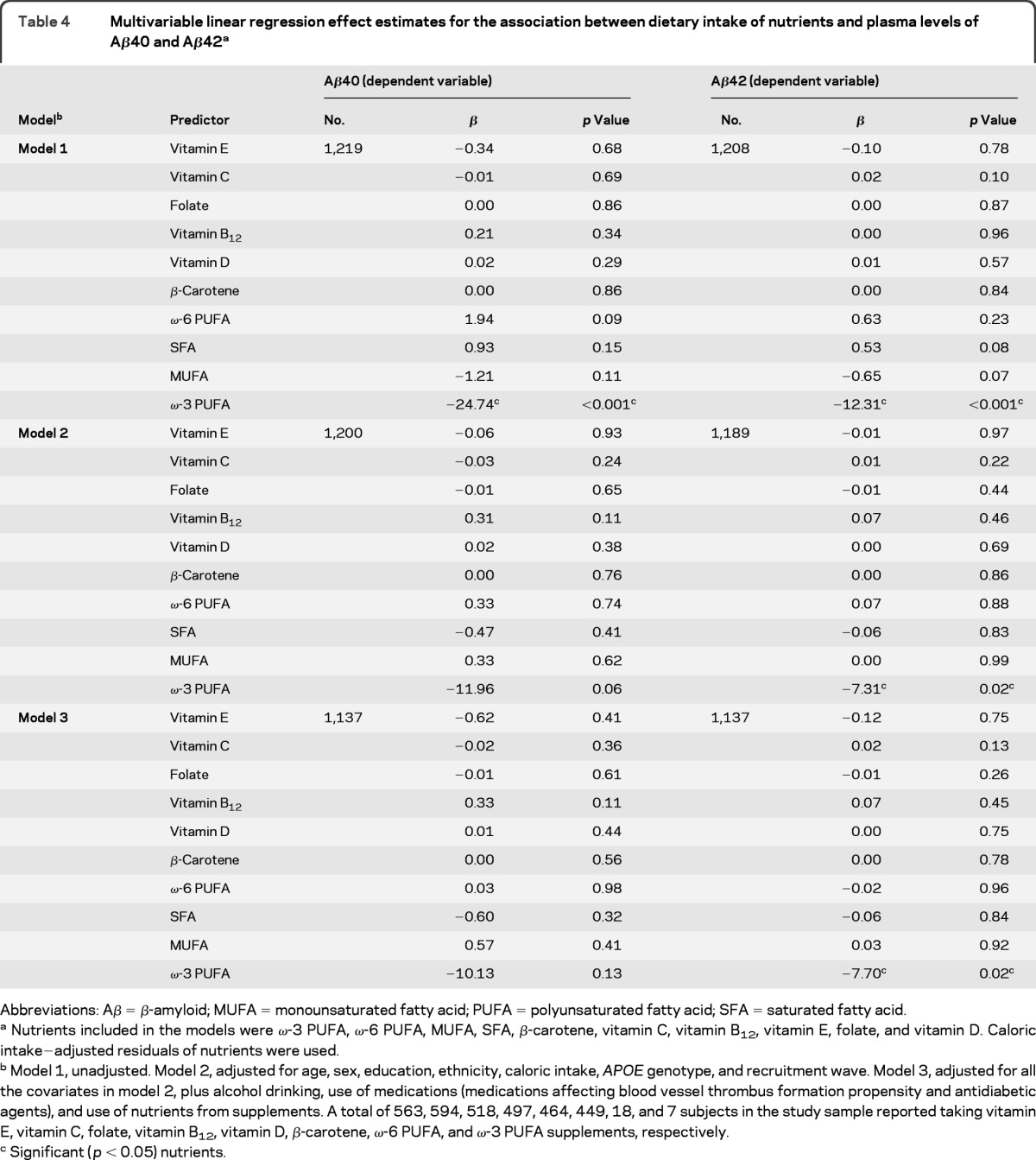Table 4.
Multivariable linear regression effect estimates for the association between dietary intake of nutrients and plasma levels of Aβ40 and Aβ42a

Abbreviations: Aβ = β-amyloid; MUFA = monounsaturated fatty acid; PUFA = polyunsaturated fatty acid; SFA = saturated fatty acid.
Nutrients included in the models were ω-3 PUFA, ω-6 PUFA, MUFA, SFA, β-carotene, vitamin C, vitamin B12, vitamin E, folate, and vitamin D. Caloric intake−adjusted residuals of nutrients were used.
Model 1, unadjusted. Model 2, adjusted for age, sex, education, ethnicity, caloric intake, APOE genotype, and recruitment wave. Model 3, adjusted for all the covariates in model 2, plus alcohol drinking, use of medications (medications affecting blood vessel thrombus formation propensity and antidiabetic agents), and use of nutrients from supplements. A total of 563, 594, 518, 497, 464, 449, 18, and 7 subjects in the study sample reported taking vitamin E, vitamin C, folate, vitamin B12, vitamin D, β-carotene, ω-6 PUFA, and ω-3 PUFA supplements, respectively.
Significant (p < 0.05) nutrients.
